 |
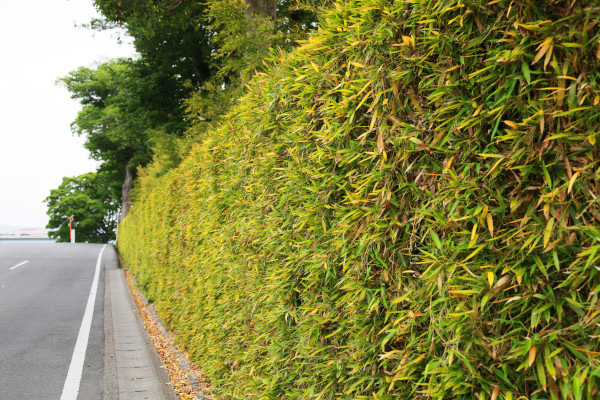 |
| Katsuragaki Hedge |
Katsuragaki Hedge encloses east side of Katsurarikyu along the street.
Katsuragaki Hedge is made from planted live bamboo those are bent and weaved.
Therefore, those leaves are kept raw green all year round.
|
 |
|
 |
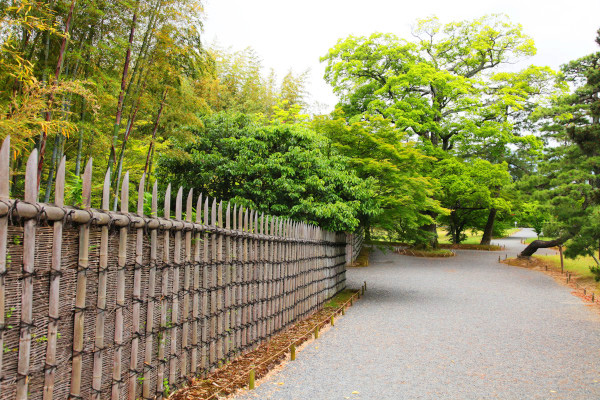 |
| Katsuragaki Hedge |
Hogaki is the line up of banboos those tops are cut like a spear-head.
|
 |
|
 |
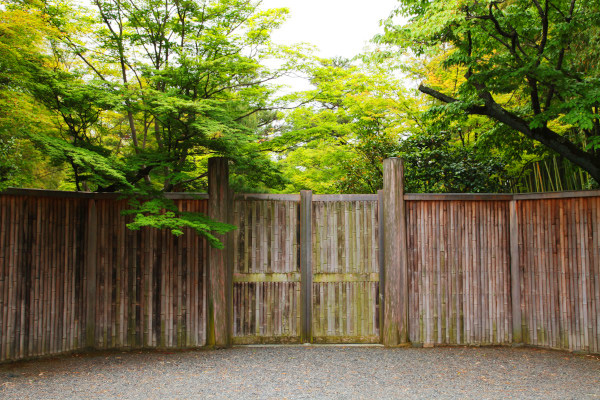 |
| Main Gate |
This gate is opened, when main official guest comes.
Its pillars are log of white cedar.
Its wall and door is filled with polished bamboo.
|
 |
|
 |
 |
| Hogaki(Spear-head Banboo Hedge) |
Hogaki(Spear-head Banboo Hedge)
The upper part of Hogaki
There are live bamboos beyond the Hogaki.
|
 |
|
 |
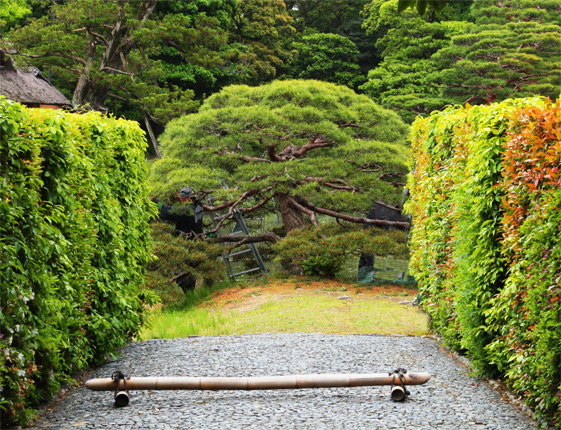 |
Sumiyoshi Pine
Ararekoboshi(hailstone pavement) |
Sumiyoshi Pine stands at the top of triangle peninsula so called tale of turtle.
Black stones are paved on the path by means of Ararekoboshi(hailstone pavement method).
|
 |
|
 |
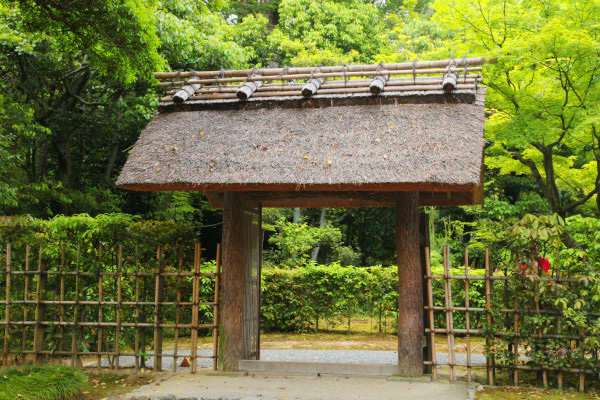 |
| Miyuki Gate |
Miyuki Gate was built for the purpose of greeting Ex-emperor Mizunoo.
|
 |
|
 |
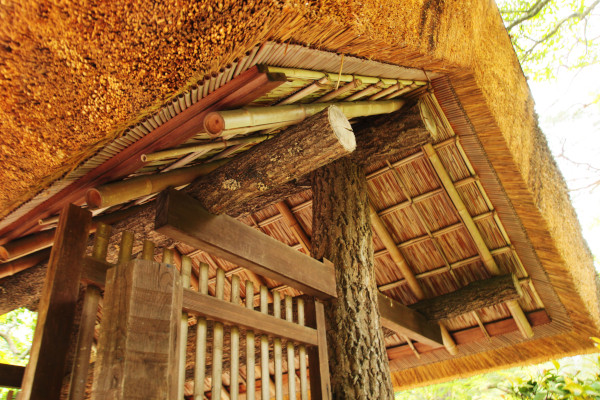 |
| Miyuki Gate |
The pillars are made of log with thick bark.
Bamboo duckbord is used for the door.
|
 |
|
 |
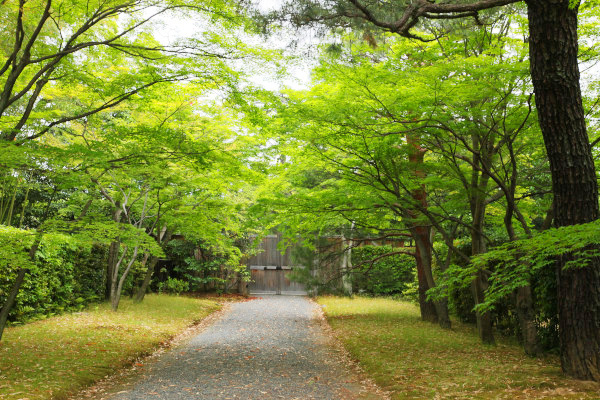 |
| Main Gate Viewing from Miyuki Gate |
The width of path becomes narrow gradually so that the path appears longer
than true length.
|
 |
|
 |
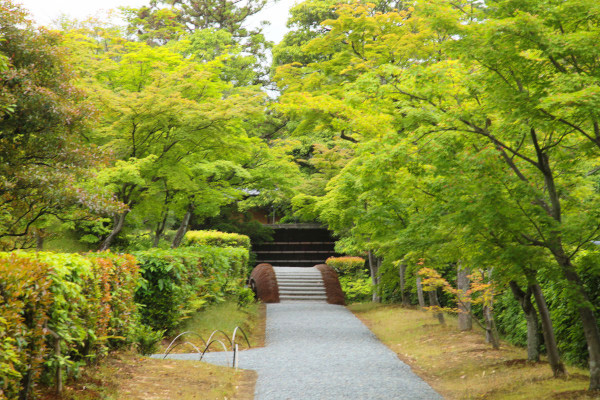 |
| Dobashi(Soil Bridge) and Miyuki Path |
Dobashi(Soil Bridge) and Miyuki Path
Looking back to Miyuki Path and Dobashi from Miyuki Gate.
Miyuki Path is paved with black stones by means of Ararekoboshi(hailstone pavement method)
|
 |
|
 |
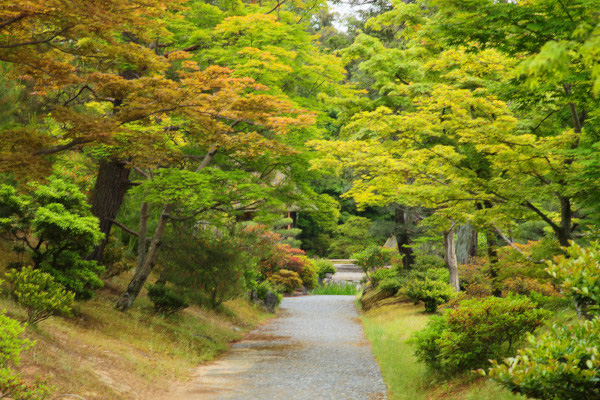 |
Kouyou no Baba
(Autumn leaves horse ground) |
This path is called Kouyou no Baba(Autumn leaves horse ground).
Once, there was a bridge connected to Shokintei at the end of this path.
|
 |
|
 |
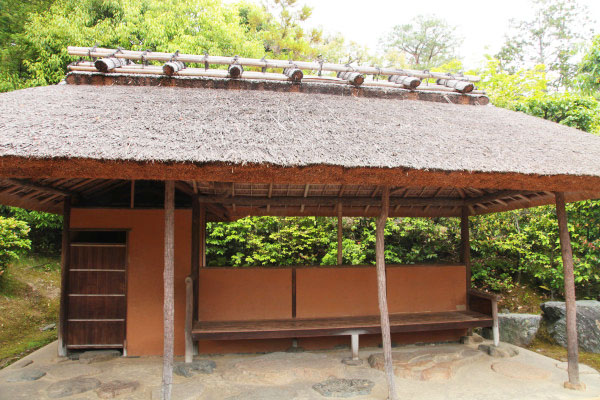 |
| Sotokoshikake |
Sotokoshikake was built as Machiai (waiting cabin) of Tyashitsu ( tea room) in Shokintei.
It is a thatched yosemune-zukuri (hipped roof structure).
|
 |
 |
|
 |
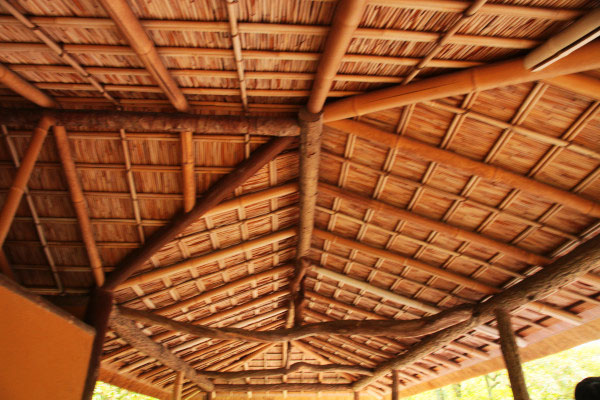 |
| Attic of Sotokoshikake |
The pillars are made of thin bent log with bark.
Thin bent logs with bark are also used for beams etc.
Since unprocessed wood and bamboo raftlers are visible, Sotokoshikake shows lightweight and natural taste.
|
 |
 |
|
 |
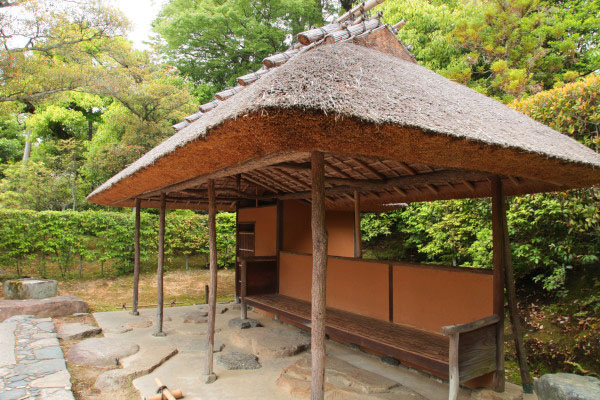 |
| Surrounding of Sotokoshikake |
At the front and one side of the cabin is opened.
Stones which have various characters, color, figure or materials, are positioned elaborately.
Seeing flagstones and stone-laden path, the guests enjoyed waiting time.
|
 |
 |
|
 |
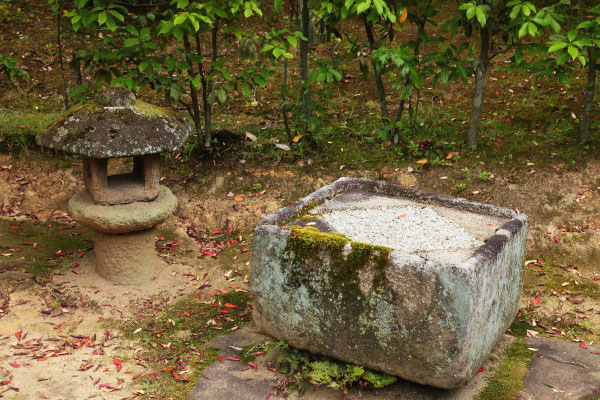 |
Chozubachi(washbowl) and
garden lantern |
The Chozubachi shows duplicate shape and be liked by Enshu Kobori who is
a talented artist and a daimyo(feudal lord) at the same time.
|
 |
 |
|
 |
 |
| Sotetsuyama Hill |
The Sotetsu(cycadophyte) trees are presented by the Shimazu clan.
Its tropical figure is not familiar in Kyoto.
Therefore, guests are enjoyed seeing their figure while waiting for the tea ceremony.
|
 |
 |
|
 |
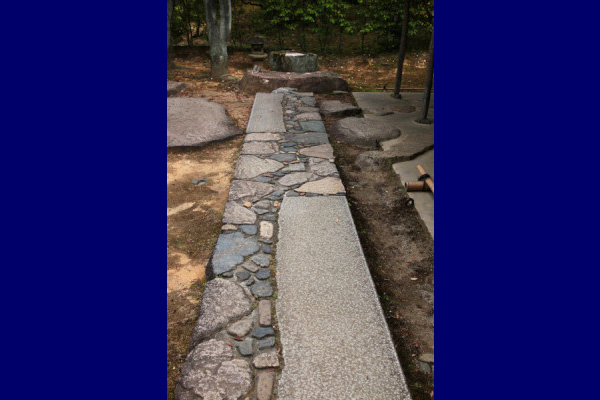 |
| Nobedan(Stone-laden path) |
The size is 16.5m length by 90cm width.
It is composed of cut stones and natural stones. |
 |
 |
|
 |
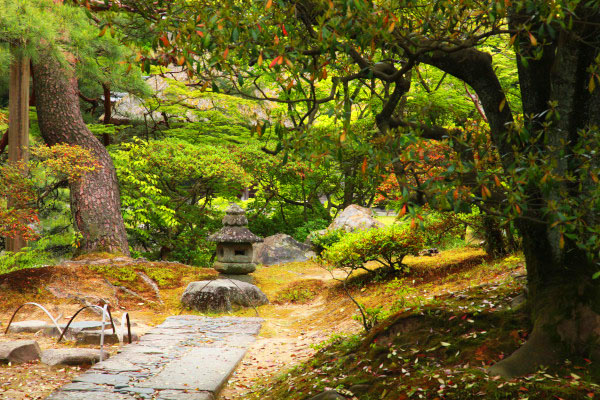 |
| Garden lantern at the end of Nobedan |
Garden lantern at the end of Nobedan
Nobedan stretches to the path bound for Shokintei, turning left at the garden lantern.
|
 |
 |
|
 |
| |